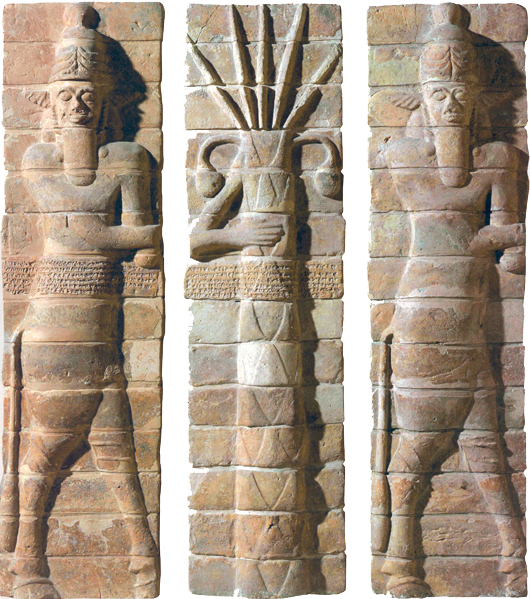Image Details

Erich Lessing
Two striking half-bull, half-human images of Shilhak-Inshushinak, a 12th-century B.C. king of Susa (in modern Iran), flank a stylized palm tree in this 4.5-foot-high glazed-brick panel (compare with photo of cuneiform tablet), now in the Louvre. The palm tree symbolizes both the fertility of the earth and the grandeur of the heavens, suggesting that royal power is sanctioned by cosmic forces. According to author Marian Feldman, by the Late Bronze Age (c. 1550‒1200 B.C.E.) images of the “tree of life” had become a hybridized symbol (often a combination of palm tree/lotus flower/lily) of royal power throughout the Near East and eastern Mediterranean.
